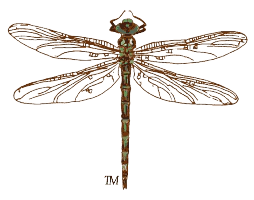Meet the Fireflies!
Hays County Master Naturalist Spring Class of 2025
A fabulous guided hike at Westcave Discovery Center Photo courtesy Mary O’Hara
Mary O’Hara
Our 2025 Spring Training season has concluded after 40+ hours of indoor and outdoor learning about the natural wonders of Hays County and the surrounding areas. Thirty-three bright lights now shine proudly with the new title of Texas Master Naturalist!
As is our HCMN tradition, the class name—Fireflies—was chosen by popular vote over other native species. The graduates span a wide variety of occupations, ages, and passions: college students, biologists, gardeners, nurses, social workers, educators, biophysicists, and retirees, all connected by a love of nature and a desire to protect it.
A little bit about their namesake…
The family Lampyridae includes more than 2,000 described species of elateroid beetles—commonly called fireflies, lightning bugs, or glowworms—for their conspicuous bioluminescence. Fireflies vary widely in appearance, with differences in color, shape, size, and features, such as antennae.
The enzyme luciferase acts on luciferin, in the presence of magnesium ions, ATP, and oxygen, to produce light. Oxygen is supplied via an abdominal trachea, or breathing tube. Adult lampyrids communicate in a variety of ways during courtship: steady glows, flashing signals, and the use of pheromones unrelated to their light-emitting systems. Each species emits a unique pattern to find its preferred mate.
Firefly populations are thought to be declining worldwide. They face threats including habitat loss and degradation, light pollution, pesticide use, poor water quality, invasive species, over-collection, and climate change. Firefly tourism—a rapidly growing sector of the travel industry—has also been identified as a potential threat to fireflies and their habitats when not properly managed.
Texas hosts 45 firefly species thanks to its wide biodiversity. You can find those native to the Edwards Plateau here: Texas Fireflies – Firefly Conservation & Research.
Site visit to Patsy Glen Refuge for birding with David Womer Photo courtesy Mary O’Hara
Catching butterflies and other insects at Texas State University Freeman Ranch for Entomology Class Photo courtesy Mary O’Hara
Removing invasive Eurasian milfoil at John Knox Ranch Photo courtesy Mary O’Hara
A chilly day at Jacob’s Well Natural Area for geology with Bret Fossum Photo courtesy Mary O’Hara
Herpetology Class with live specimens! Photo courtesy Mary O’Hara
A trip to Bracken Cave to round out the training fun and experience the “batnado” Photo courtesy Nelda Reyes
Going a little batty with anticipation! Photo courtesy Mary O’Hara
Training in Action
In addition to their classroom work, each member-in-training is expected to log 40 hours of volunteer service and 8 additional hours of Advanced Training (AT). These dedicated Fireflies have already contributed 1,156 volunteer hours and 342 AT hours toward becoming Certified Texas Master Naturalists!
Some more fun firefly facts from Firefly.org:
Communication by light – Each species has a unique flash pattern, primarily used to find a mate, but they also signal to defend territory and warn predators away.
Cold light is 100% efficient – Fireflies produce light using luciferin (a pigment), luciferase (a catalyst), and ATP (a nucleotide), all combined with oxygen. Unlike other light sources, their light produces no heat.
Medically useful – Because luciferin and luciferase light up in the presence of ATP, they can be used to detect abnormal ATP levels in diseased cells—useful in studying cancer and muscular dystrophy.
Don’t eat fireflies – When threatened, fireflies "reflex bleed," releasing drops of blood containing bitter, sometimes toxic chemicals that deter predators.
Texas is a hotspot – 45 species of Lampyridae live in Texas—nearly one-fifth of all North American species. Look for them at the edges of forests and fields, in tall grasses, or near water sources like ponds, marshes, rivers, and lakes. Even a small depression or seasonal pool can serve as a mating site.
Just like their namesake, the Firefly Class is remarkable—each person is unique, yet together they shine brightly, protect their environment fiercely, and bring extraordinary energy and dedication to their newfound passion: becoming Texas Master Naturalists.


